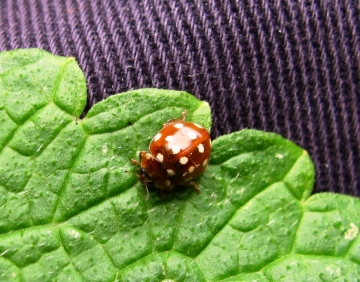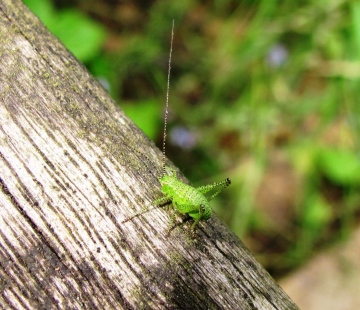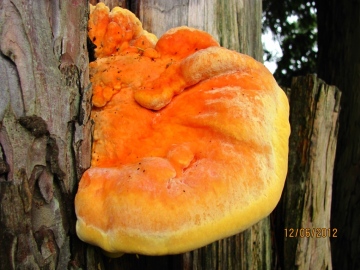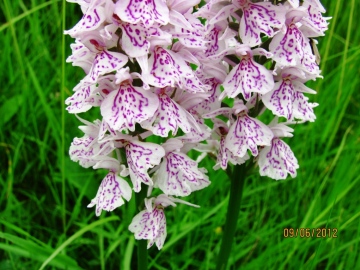Spent the morning in the garden on 4th - sitting, reading, drinking tea, contemplating my navel, and enjoying the wildlife to be found there - the garden, that is, not my navel! Afterwards, of course, there followed guilty feelings about not "doing something useful". Sad. It's about time I taught the Victorian work ethic to know its place!
My most pleasing discovery was that the Tree Bumblebee Bombus hypnorum has at last reached my garden. It's about time - it seems to have reached everyone else's. Easily identified by the combination of orange thorax and white tipped abdomen, it is one of the few bumblebee success stories of recent years, having spread from Europe and colonised much of southern England. Other bumblebees were scarce - as they have been throughout this spring - the commonest being the orange tailed Bombus pratorum, workers of which were carrying sacs of pollen back to their nest in my old compost heap. Equally pleasing was to see two pairs of Large Red Damselfly mating and egg laying in my pond. I say 'pond' but natural succession is gradually turning it into a swamp, especially since I introduced the rapidly spreading Fine-leaved Water Dropwort into it, and I have to frequently do battle with it in order to free up a few areas of open water where the Smooth Newts and Rams-horn Snails can breed. The leaves of the persicaria overhanging the pond were adorned this morning with several Helophilus pendulus, a yellow, stripey-thoraxed hoverfly whose larva feed in the salubrious surroundings of wet compost and farmyard drains. Six other common species were also present, including the Lesser Bulb Fly Merodon equestris, which Peter saw in his garden, and whose grubs wreak havoc with my Bluebell bulbs. A similar looking species is, as he mentions, Volucella bombylans, but the larvae of this species are scavengers in bee nests and the one seen today may have had its eye on the Bombus pratorum nest in the compost. It's distinctive cousin, Volucella pelluscens, which has a broad white band across the abdomen - and whose larvae live in the nests of social wasps - was also present, as too the familiar Drone Fly Eristalis tenax. The grubs of this species are know as Rat-tailed Maggots as they possess an extendable tube of up to eleven inches in length which enables them to breath fresh air whilst deep within the unspeakable gunge which they often inhabit. Two common insects not found in the garden before - probably because that previously mentioned work ethic is always getting in the way - were the Cream-spot Ladybird and this early instar of the Speckled
Bush Cricket, so it was good to welcome them to a plot that certainly looks a bit wild at this time of year and - on this morning's evidence at least - has plenty of life in it as well.
The rest of the week was more suited to fungi than insects and I found this fine clump of Chicken of the Woods Laetiporus sulphureus on a four hundred year old Yew at Fryerning Churchyard, a tree it will
probably help kill in the end. The Germans are alleged to consider this species a delicacy but I am not sure how they prepare it. Grated on salad perhaps? It certainly looks quite tasty in its fresh state. One plant I did find, while helping the Head Ranger, Chris Huggins, with a wild flower walk at Mill Fields,
Billericay, was this orchid, one of several hundred on view that day. I have it on the highest authority - the Botanist in Chief no less - that these are Heath Spotted Dactylorhiza maculata, rather than the more familiar Common Spotted Orchids D. fuchsii. The principal distinguishing feature of the former is that the central lobe of the lower lip is as long or shorter than the two laterals and less than half as wide as them, the central lobe being longer and wider in the Common Spotted. This can, I hope be seen on the photo! The Heath Spotted is far commoner in the wetter north and west of Britain, so the person who first looked at these critically and re-identified them deserves a pat on the back.
























